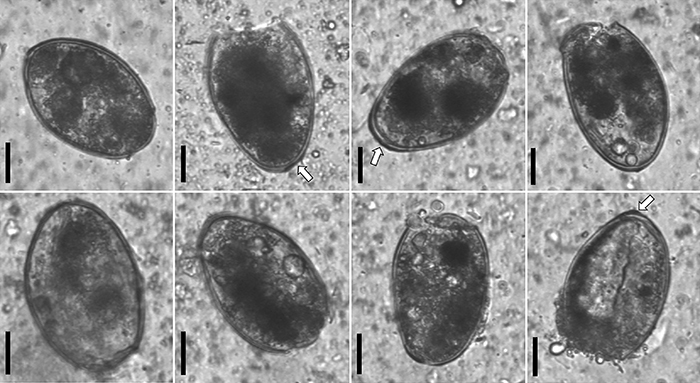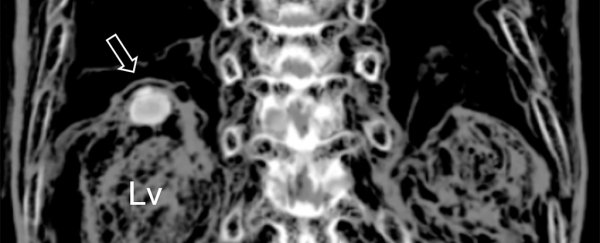An autopsy on a 375-year-old mummy from South Korea has turned up a rather grisly find: the corpse was harbouring a parasitic infection on its liver called Paragonimus westermani, probably caused by eating raw shellfish or their juice.
To make the story even more skin-crawling, 17th century doctors in this part of Asia would've recommended guzzling raw crayfish juice to treat measles, so chances are that the infection was self-inflicted.
The mummy was once a man called Jing Lee, say the researchers from Dankook University College of Medicine in South Korea, and he would have been 63 when he died in 1642. The infection is not pleasant – but it might not have killed Lee.
"I cannot say that this pathological condition could be the cause of death," lead researcher Min Seo told Colin Barras at New Scientist.
 Ancient Paragonimus eggs. Credit: Dankook University College of Medicine
Ancient Paragonimus eggs. Credit: Dankook University College of Medicine
Having unearthed the body in 2014, the researchers noticed an odd lump on the man's liver that was shown up by a CT scan. When the lump was removed, it was found to contain golden-brown eggs about 85 micrometres long (less than one hundredth of an inch).
Those eggs were then identified as being from the parasitic flatworm (or "fluke") Paragonimus westermani. That makes Lee the oldest ever known case of hepatic paragonimiasis to be discovered.
Caused by eating undercooked crustaceans, the infection occurs when these parasitic flukes settle down on the liver or lung, and it can eventually lead to diarrhoea, vomiting, and bloody coughing – not a nice experience, in other words.
It's believed raw crustaceans were seen as something of a delicacy in South Korea in the 1600s, as well as possible medical treatment.
The effects of Paragonimiasis are comparable to something like pneumonia or stomach flu, and the infection can last for years.
"The parasite will penetrate through the lining of the intestine and then it's free to move around the peritoneal cavity," James Diaz from Louisiana State University, who wasn't involved in the research, told New Scientist.
After forming an egg-filled cyst, the parasite can find its way into the airways if the cyst bursts, which causes the bloody spitting.
While Paragonimiasis is not common in the US, it is still found in southeast Asia, Central America, and South America, and could affect almost 300 million people worldwide. The best bet to avoid it is to be very careful about the seafood you eat, and how it's cooked.
Jing Lee was one of the unlucky ones, though his unfortunate experience is now giving researchers a better understanding of health patterns during the Korean Joseon Dynasty. In fact, of the 18 mummies the team has studied so far, they've all contained at least one type of parasite.
Just add them to the list of sinister bugs to watch out for.
The rather creepy research has been published in the Journal of Parasitology.
